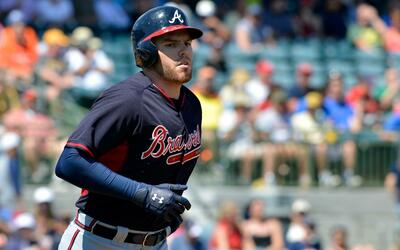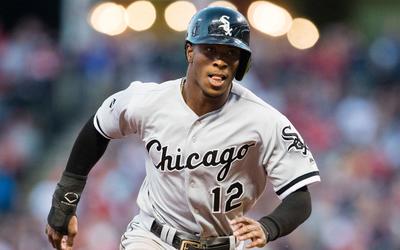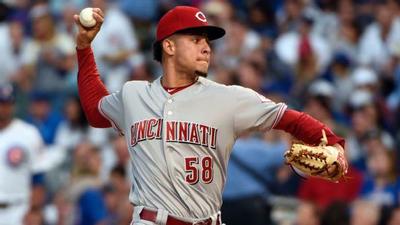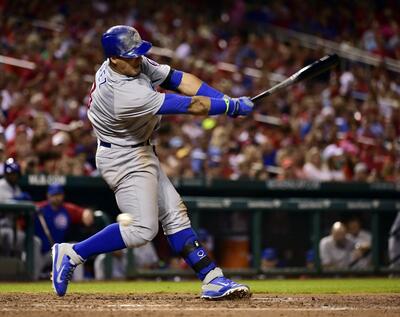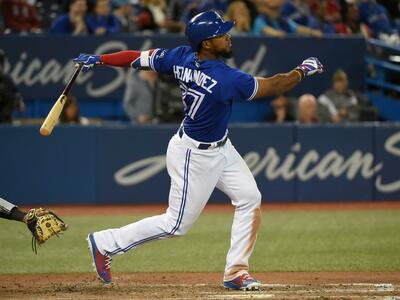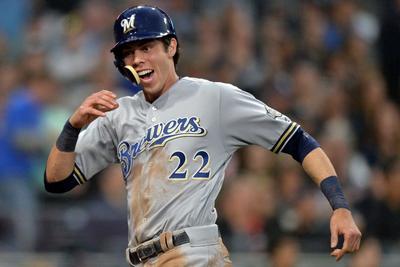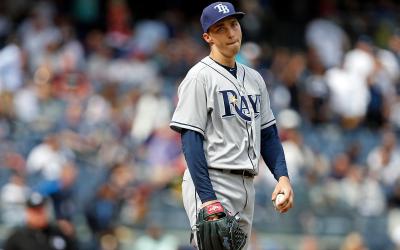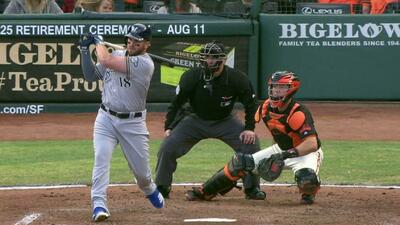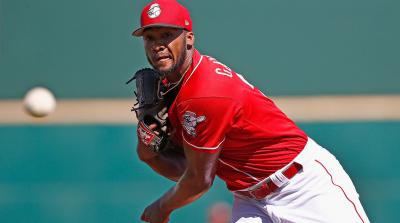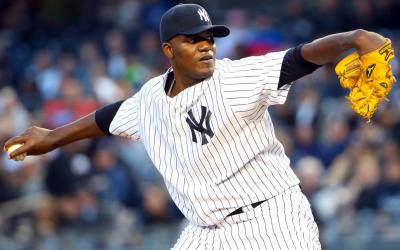Hopefully everyone is well rested after the long and well deserved holiday weekend! Before we get into our usual Sabermetric Tuesday column, let’s take a moment out to recognize and appreciate all those who have made it possible for all of us to live safely within our borders. To those who have served and the family members of those who have served: Thank You! Without the sacrifices put in place by those that serve, my comfy life sitting on a couch every evening and watching the sport I love wouldn’t be possible. Thank you so much to all those that have put their lives on the line for the safety of the rest of us!
While the Memorial Day holiday brings us a day off from work, and a day to spend time with the family and reflect on the comforts we’ve been afforded, it also provides a nice marker for the fantasy baseball season. Memorial Day marks the 1/3 point of the season and makes for a nice evaluation point for your fantasy team. All season long we’ve been preaching patience noting how “early” it is in the season and not to cut bait to soon, but as Yogi Berra said “It gets late early out there”. All of the sudden a 1/3 of the season is in the books and statistics start to become very real. Hitters are rapidly approaching the 200 AB mark and Pitchers are nearing the 80 inning mark. With the numbers becoming a bit more real it’s important to start looking at some of the Team Splits and taking that data into account when making lineup decisions from week-to-week. So with that in mind this week we’re going to take a look at the Team Splits, as this should be helpful in identifying matchups for both hitters and pitchers. We use this reminder quite a bit during the football season but matchup based-statistics are best used when evaluating like levels of talent or evaluating borderline starting options. Do not sit Johan Santana against the Phillies because they destroy LH pitching. With that brief disclaimer, let’s get to work! We’ll look at stats for both hitters and pitchers during this week, but for your viewing pleasure I’ll split this into two separate posts. This initial post will cover Splits statistics for Team Batting which should be useful when evaluating Pitching Options, and I’ll follow up later this week with a Blog entry on Team Pitching, which should be helpful when evaluating Batting options.
Splits to pay attention for Pitching Options:
First let’s take a look at On-Base Percentage. On-Base Percentage is a pretty meaningful statistic when judging the level of competition an opposing pitcher has to face. I value this statistic most when looking at pitcher’s that struggle with control, guys like Oliver Perez and Daniel Cabrera you’ll generally want to avoid having in your lineup when they face high OBP opponents.
OBP Total
Top 5: Chicago Cubs .366, St. Louis Cardinals .365, Boston Red Sox .358, Atlanta Braves .353, Texas Rangers .351
Bottom 5: San Diego Padres .306, Seattle Mariners .310, Washington Nationals .311, Kansas City Royals .314, Cleveland Indians .314.
OBP vs. LH Pitching:
Top 5: Boston Red Sox .392, Chicago Cubs .382, LA Dodgers .376, St. Louis Cardinals .374, Arizona Diamondbacks .366.
Bottom 5: San Diego Padres .279, Toronto Blue Jays .297, Washington Nationals .304, Minnesota Twins .304, Oakland A’s .310.
OBP vs. RH Pitching:
Top 5: St. Louis Cardinals .361, Chicago Cubs .360, Atlanta Braves .358, Texas Rangers .358, Boston Red Sox .351.
Bottom 5: Seattle Mariners .299, Cleveland Indians .304, Kansas City Royals .308, San Francisco Giants .310, Pittsburgh Pirates .312
OBP Takeaway:
The Cubs, Cardinals, Red Sox, and Braves are offenses you simply don’t want your mid-tier starters facing, especially those starters with spotty control as these offenses are churning out base-runners at a high clip. On the other side of the equation, spot starting options against Seattle, San Diego, Washington, Kansas City, and surprisingly the Cleveland Indians makes for a wise decision. San Diego can’t hit anyone that’s left-handed, making Joel Lannan and Odalis Perez suddenly more intriguing options this week. The Mariners are the exact opposite and as I watch Bartolo Colon manhandle their lineup through the first 3 innings, I remind myself that this is probably more Seattle’s ineptitude than Bartolo Colon. Interestingly enough, Seattle is actually passable against LH pitching, posting a .347 OBP that ranks just outside the Top 10. Toronto’s the exact opposite as they cannot hit LH pitching if their lives depended on it, but stick them in against RH’s and their 6th in all of baseball with a .348 OBP. This is especially interesting since Toronto ranked 2nd in all of baseball last season against LH pitching with a .365 OBP, think the departure of Frank Thomas and his .431 OBP against LH pitching last year isn’t missed?
Next let’s take a look at Slugging %, while Slugging % may not be as important or useful as OBP, it is a useful tool when specifically analyzing pitchers who tend to live by the Fly Ball. Teams that have higher Slugging %’s are teams that are generally hitting more HR’s and Extra base hits which are almost exclusively earned on Fly Balls. Teams that post particularly high Slugging %’s you’ll want to be careful using borderline options unless if they’re Fly Ball specialists.
Slugging Totals:
Top 5: Philadelphia Phillies .459, Florida Marlins .456, Boston Red Sox .450, Texas Rangers .448, Chicago Cubs .445.
Bottom 5: Washington Nationals .353, Kansas City Royals .358, Cleveland Indians .364, San Diego Padres .365, Toronto Blue Jays .373.
Slugging vs. LH Pitching:
Top 5: Philadelphia Phillies .485, Arizona Diamondbacks .481, Detroit Tigers .476, Boston Red Sox .466, Chicago Cubs .460.
Bottom 5: Toronto Blue Jays .313, Oakland A’s .319, San Diego Padres .341, Washington Nationals .349, New York Yankees .354.
Slugging vs. RH Pitching:
Top 5: Florida Marlins .483, Texas Rangers .469, Atlanta Braves .462, Boston Red Sox .448, New York Yankees .443.
Bottom 5: Washington Nationals .353, Kansas City Royals .355, Cleveland Indians .363, LA Dodgers, .364, Seattle Mariners .372.
Slugging Takeaway:
The first thing that stands out to me is the Yankees HUGE difference between facing LH pitching and RH pitching. Against LH’s the Yankees are not just mortal, they’re flat out bad. You can get away with spot-starting LH’s against them (as we saw yesterday with Garrett Olson), but against RH pitching keep your mid-tier options on the pine. Another notable split is how much the Phillies are MURDERING LH pitching! The Phils are posting a .485 Slugging % against LH pitching despite 2 of their best hitters (Chase Utley and Ryan Howard) being Left-Handed. Utley, especially has been murdering LH pitching to the tune of a .610 Slugging %. The Marlins are another interesting team as they’re far and away the #1 team in terms of Slugging against RH’s but against LH’s they’re Slugging over 100 points worse! Left-Handed spot starters can be used against the Marlins post just a .685 OPS against LH’s. One final note as the Tigers offense while it’s largely under-performed expectations, they continue to obliterate LH pitching, so stay away from using LH starters against the Mo-town boys.
Finally, we’ll take a look at the Home/Road discrepancies and try to identify if any teams have significant differences in production inside and outside their home park. We’ll use a 100-point difference in OPS to suggest vast differences in production. We’d expect to see teams with favorable home ballparks to make this list.
Home/Road OPS Disparities:
Much Better at Home (100 OPS better):
Chicago Cubs .894/.724
Arizona Diamondbacks .853/.692
Detroit Tigers .836/.705
Atlanta Braves .826/.718
Houston Astros .819/.696
Colorado Rockies .773/.658
Much Better on Road (100 OPS better):
None qualified
Home/Road Takeaway:
The Cubs and Diamondbacks especially are different offenses when they’re at home. At home both of these offenses are elite and starting your pitchers against them makes for a difficult matchup, but on the road each of these offenses have struggled and become average, with the Diamondbacks becoming well below average on the road.



